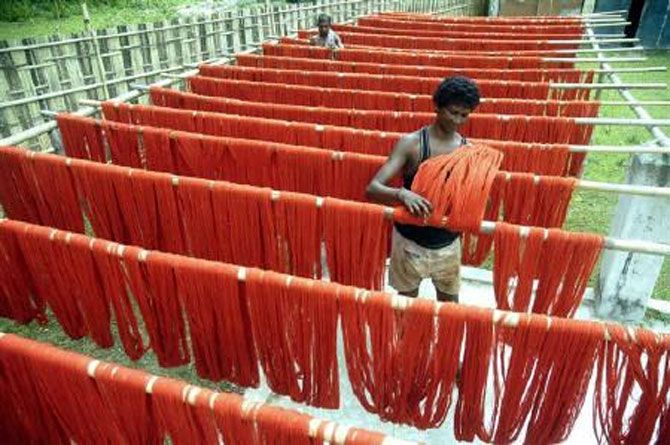The government has to cover a lot of ground if it wants to achieve the target of generating 10 million new jobs in the sector over the next three years, says Shyamal Majumdar.

It’s hardly a surprise that the Rs 6,000-crore package for the textiles sector has been welcomed by everybody, as the incentives relating to tax, production and labour to garment makers are expected to improve the competitiveness of the sector globally.
For instance, the highly seasonal garment manufacturers can now hire workers on fixed-term contracts with double the overtime work limits and greater freedom for women employees, who already form a significant share of the textiles labour force.
India has the world’s second-largest manufacturing capacity in textiles and accounts for 13 per cent of the production of textiles, fibre and yarn.
Besides, the sector is the largest job generator in the country after agriculture, employing more than 32 million people.
Hence, such a package has long been overdue. The government is clearly banking on it to absorb millions more, on the basis that the textiles sector would be able to generate 10 million jobs over the next three years.
The calculations may have been prompted by an Assocham report, which said that employment generated in the economy because of a rise of Re 1 in demand is roughly five times the employment created in the sector.
So far, so good. But the target of 10 million jobs may remain a mirage.
Just a week after the textiles package was announced, industry body Texprocil and EY released a study that shows why the government still has a lot of ground to cover if it has to reach anywhere near that target.
For example, the study says the industry is likely to generate just one-third (or 2.9 million) of the jobs relative to the government’s target - that, too, in five years - although the market size is expected to grow by 40 per cent to $142 billion in the next five years.
That’s because the technological advancement leading to increased efficiency has already reduced job opportunities.
Already, the number of workers per Rs 1 crore of sales has declined from a high of 40 workers to just 25 workers.
Also, the spinning, autoconer and auto-splicer divisions have replaced the job of 20 workers with that of only two workers.
The study pointed out two other important issues which, if followed, can play a catalytic role in employment generation.
One, the absence of free trade agreements (FTA) with the European Union, Australia and Canada costs India almost 5.5 million jobs in the sector.
Additional exports would have generated these jobs had FTAs been in place.
Two, there is a clear need to move to a model of hub-and-spoke employment, where hubs are created in small towns, and spokes of manufacturing can be set up in surrounding villages.
This hub-and-spoke model, successfully implemented in countries such as Bangladesh and Cambodia, can improve the labour force participation rate, especially among women in villages and small towns.
Under this model, production sheds of at least 5,000 square feet in area, employing around 500 women per spoke in rural areas, can be leased to manufacturers against verifiable proof of employment, Texprocil has said.
These are interesting suggestions, as the trend of job shrinkage due to automation is likely to gain momentum. That’s the reality.
According to a World Bank report, 69 per cent of jobs in India are at a higher risk of being replaced by automation.
Technological change over the last generation has wiped out many low- and middle-skill jobs.
Just think of the army of secretaries, typists, telephone and computer operators and payroll clerks, who occupied vast office space in earlier years.
Faster, cheaper computers and increasingly clever software are giving machines capabilities that were once thought to be distinctively human — like understanding speech, translating from one language to another and recognising patterns.
So automation is rapidly moving beyond factories to areas that provide most jobs in the economy.
Thus, the government has to move fast on the other areas that the textiles sector needs if it has to realise its target of 10 million fresh jobs in three years.
There is a huge opportunity for India and other South Asian countries, as it has been estimated that even a 10 per cent increase in Chinese apparel prices could generate at least 1.2 million new jobs in the Indian apparel industry.










